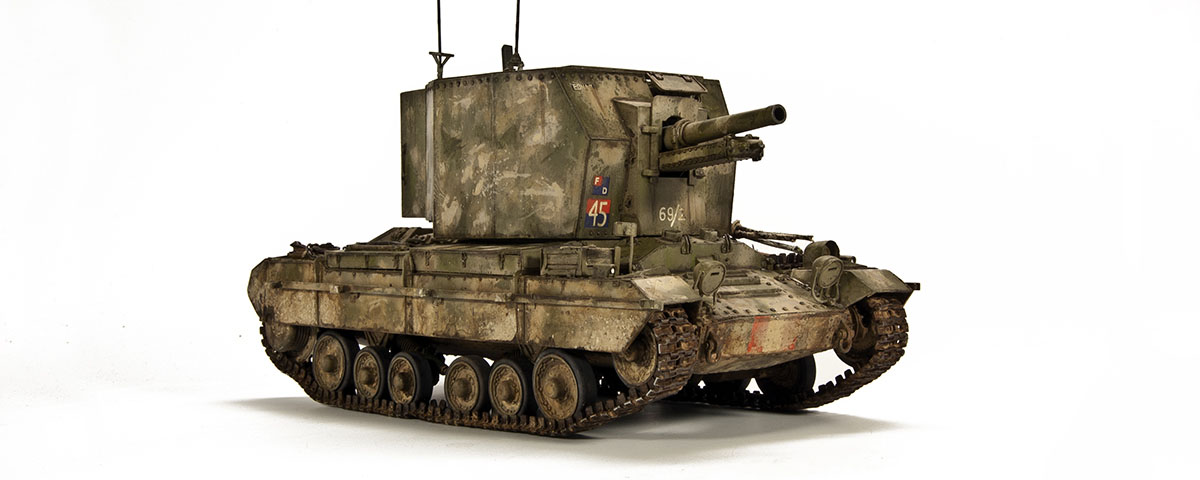When the British Army faced off against the Germans in North Africa’s western desert, they were very much surprised and impressed by the enemy’s use of mobile artillery. Desperate to keep up, the British looked for a fix to their mobile support problem. Their solution: remove the turret from the already obsolete Valentine infantry tank and mount the excellent 25-pounder gun in its place, then surround it with an ungainly, lightly armored box. The resulting Bishop 25 pounder was too slow, too tall, and oddly restricted in its gun elevation (and thus range). In action, there wasn’t enough room inside the box for the entire crew, so the rear doors had to remain open while some of the crew operated from the engine deck. At least 100 Bishops were built and saw action in North Africa and Italy before the American-built M7 Priest and Canadian Sexton replaced it.
Bronco has added the Bishop 25 pounder SPG to its growing line of 1/35th scale kits featuring British subjects. As with most armored fighting vehicle models, construction begins with the lower hull and suspension; the tracks come in the form of individual links. At the heart of the kit is the nicely detailed 25-pounder gun, which is also available from the company in its towed version. Surrounding the gun is a very fine rendition of the armored superstructure with the distinctive large rear doors. Inside the “box” there is a full load of two-piece ammo for the racks around the walls (both armor-piercing and high-explosive), a nice No.19 radio set, and other gear. Markings are included for four vehicles, two from North Africa and two from Sicily. I chose crew-applied “mud camouflage” from the Italian campaign, as found in a reference from the Imperial War Museum.
Due to the high number of smaller parts, sometimes tricky sub-assemblies, the exposed interior, and use of photoetched parts, this kit is best attempted by those with at least a moderate level of modeling skill. I highly recommend this kit for fans of artillery and British armor alike. As unsuccessful a design as the Bishop proved to be during the war, its very ugliness makes it a wonderful subject to model.
Originally published in the August 2012 issue of World War II. To subscribe, click here.





